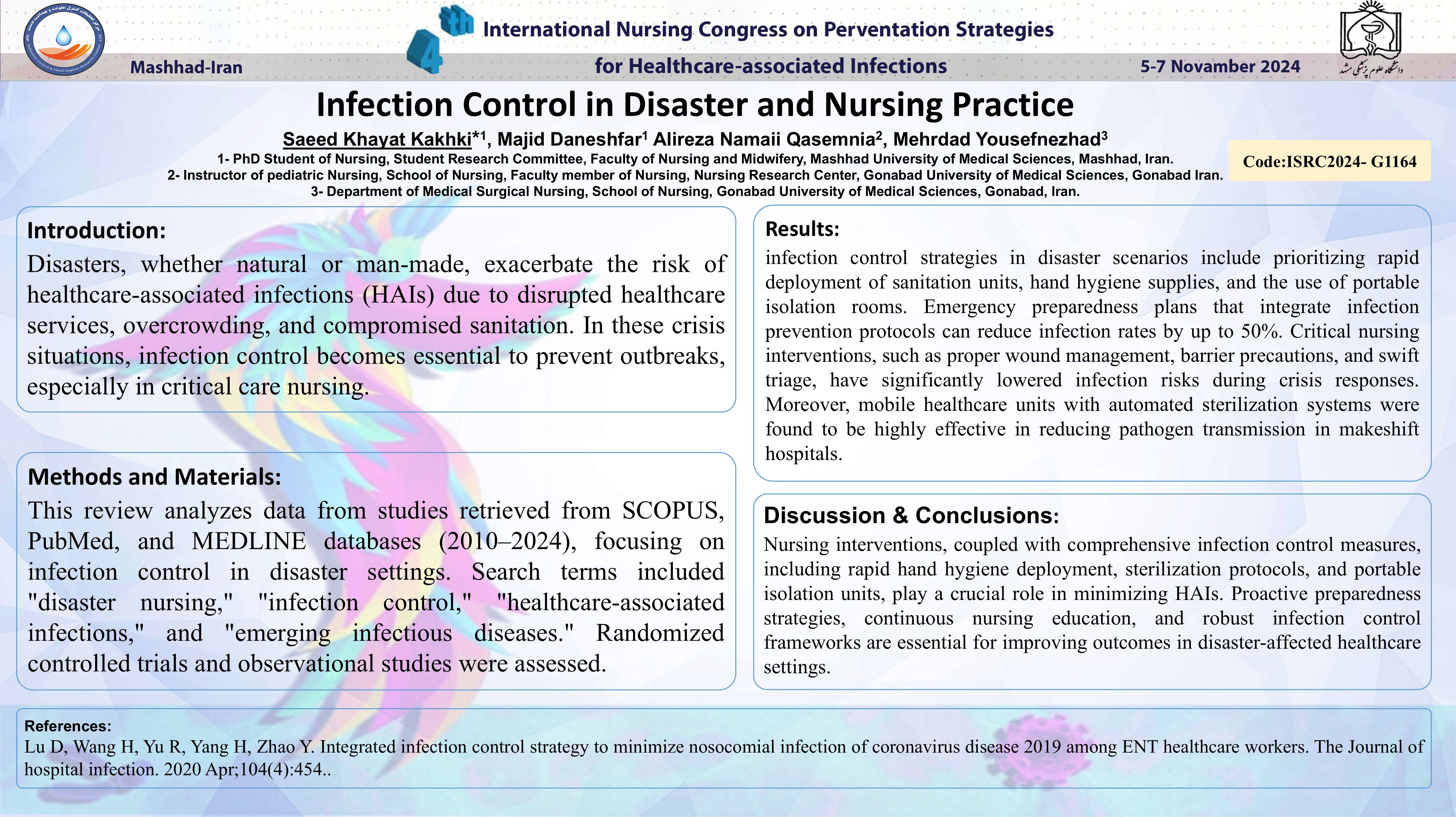کنترل عفونت در بلایا و عملکرد پرستاری
کد: G-1164
نویسندگان: Saeed Khayat Kakhki © ℗, Majid Daneshfar, Alireza Namaii Qasemnia, Mehrdad Yousefnezhad
زمان بندی: زمان بندی نشده!
دانلود: دانلود پوستر
خلاصه مقاله:
خلاصه مقاله
Background: Disasters, whether natural or man-made, exacerbate the risk of healthcare-associated infections (HAIs) due to disrupted healthcare services, overcrowding, and compromised sanitation. In these crisis situations, infection control becomes essential to prevent outbreaks, especially in critical care nursing. Methods: This review analyzes data from studies retrieved from SCOPUS, PubMed, and MEDLINE databases (2010–2024), focusing on infection control in disaster settings. Search terms included "disaster nursing," "infection control," "healthcare-associated infections," and "emerging infectious diseases." Randomized controlled trials and observational studies were assessed. Results: Findings indicate that infection control strategies in disaster scenarios include prioritizing rapid deployment of sanitation units, hand hygiene supplies, and the use of portable isolation rooms. Emergency preparedness plans that integrate infection prevention protocols can reduce infection rates by up to 50%. Critical nursing interventions, such as proper wound management, barrier precautions, and swift triage, have significantly lowered infection risks during crisis responses. Moreover, mobile healthcare units with automated sterilization systems were found to be highly effective in reducing pathogen transmission in makeshift hospitals. Conclusion: Disaster scenarios pose unique challenges for prevention of infection. Nursing interventions, coupled with comprehensive infection control measures, including rapid hand hygiene deployment, sterilization protocols, and portable isolation units, play a crucial role in minimizing HAIs. Proactive preparedness strategies, continuous nursing education, and robust infection control frameworks are essential for improving outcomes in disaster-affected healthcare settings. The review underscores the importance of ongoing investments in disaster nursing to enhance infection prevention capabilities and protect patient health during emergencies.
کلمات کلیدی
disaster, healthcare associated infections, Nursing
